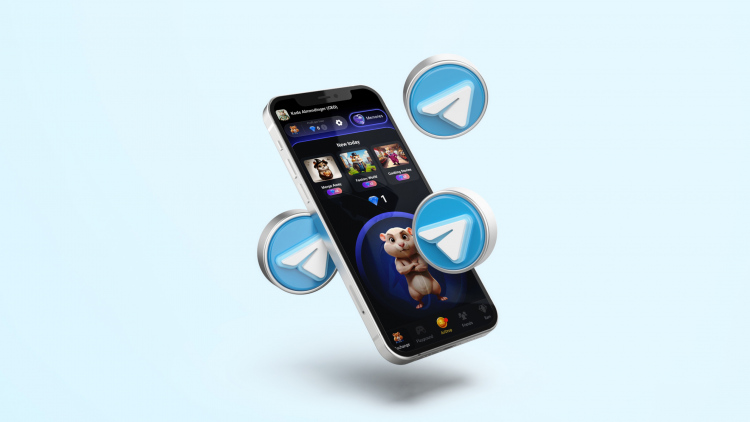Telegram apps surge in popularity
Combine mobile gaming’s popularity with Telegram’s nearly one billion-strong user base, add blockchain-based rewards and airdrops, and you have a recipe for massive global adoption.
It doesn’t hurt that Telegram is quite popular with the crypto crowd.
What is a mini app in Telegram?
Telegram mini-apps are applications that can be accessed and played through your Telegram account. These Telegram apps are compatible with The Open Network (TON), a blockchain that uses its own TON token.
Many of the popular apps are games that are fairly simple — yet also difficult to stop playing. They often feature cute animals and merely require you to click or tap away — on PC and mobile, respectively.
With the popular game Catizen, a few mouse clicks — pun intended — lets you accumulate points and populate the screen with furry felines.
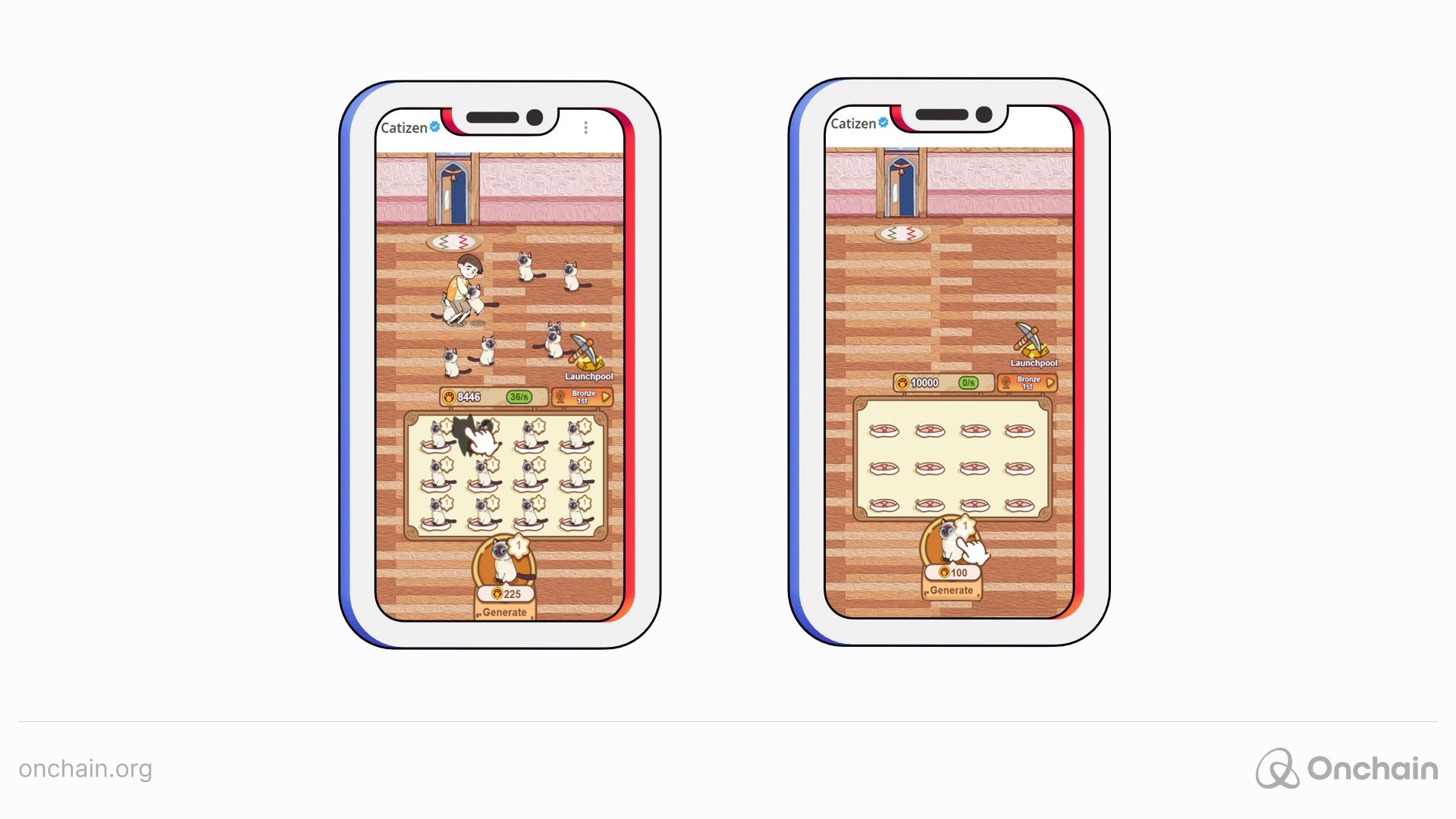
Telegram mini-app examples
Telegram mini-apps that gained widespread adoption included tap-to-earn (T2E) games like Notcoin, Hamster Kombat, and Catizen. These games have tens of millions of players worldwide. In August of 2024, Hamster Kombat had over 300 million players.
These simple yet addictive games capture headlines and boast a $2 billion+ market cap.
Yet, Telegram mini-app development goes far beyond the gaming ecosystem. Other in-Telegram app offerings include:
- DEXs
- DeFi loans
- Crypto wallets
- Block explorers
- VPNs
- And much more 🤔
In fact, there are well over 1,000 Telegram mini-apps — and counting.
Have a new app idea that breaks the copy-cat cookie-cutter mold?
You may want to skip the app stores from Google and Apple and launch it on Telegram.
Advantages of Telegram mini-apps
The deep interplay between Telegram and the TON blockchain creates an easy user experience (UX) for newcomers to blockchain. With crypto wallets that can be embedded within Telegram, you can receive, send, and transfer tokens without leaving the app.
Telegram’s open platform supports third-party development for mini-apps and bots. With the TON blockchain integration, these third-party offerings can be monetized through token payments of TON, USD stablecoins, or an app’s proprietary token.
The TON website features numerous tools, resources, and support for aspiring developers and builders of Telegram apps. If you need startup capital, there are support programs solely focused on Telegram mini-app development. This includes TON’s very own Open League, a large Bitget grant, and various other funding options.
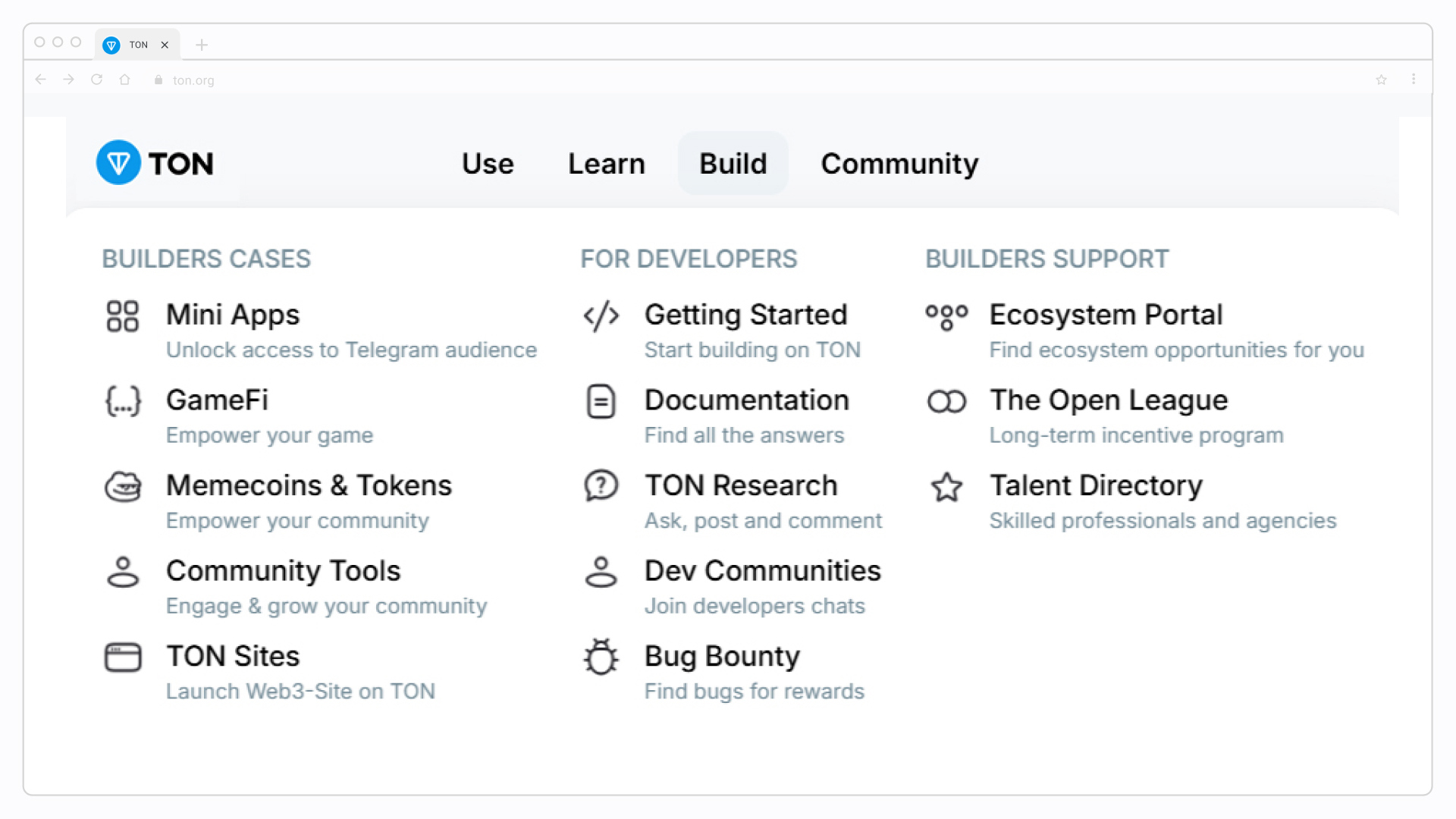
How to access Telegram mini-apps: gaming, DeFi, and more
The onboarding for Telegram apps is quite simple. If you have a Telegram account, you can find an app and start using it almost immediately. A few taps and you’re onboarded; it’s that easy.
I decided to try out Hamster Kombat. After clicking “Play,” the game appeared as a bot on my PC Telegram channel:
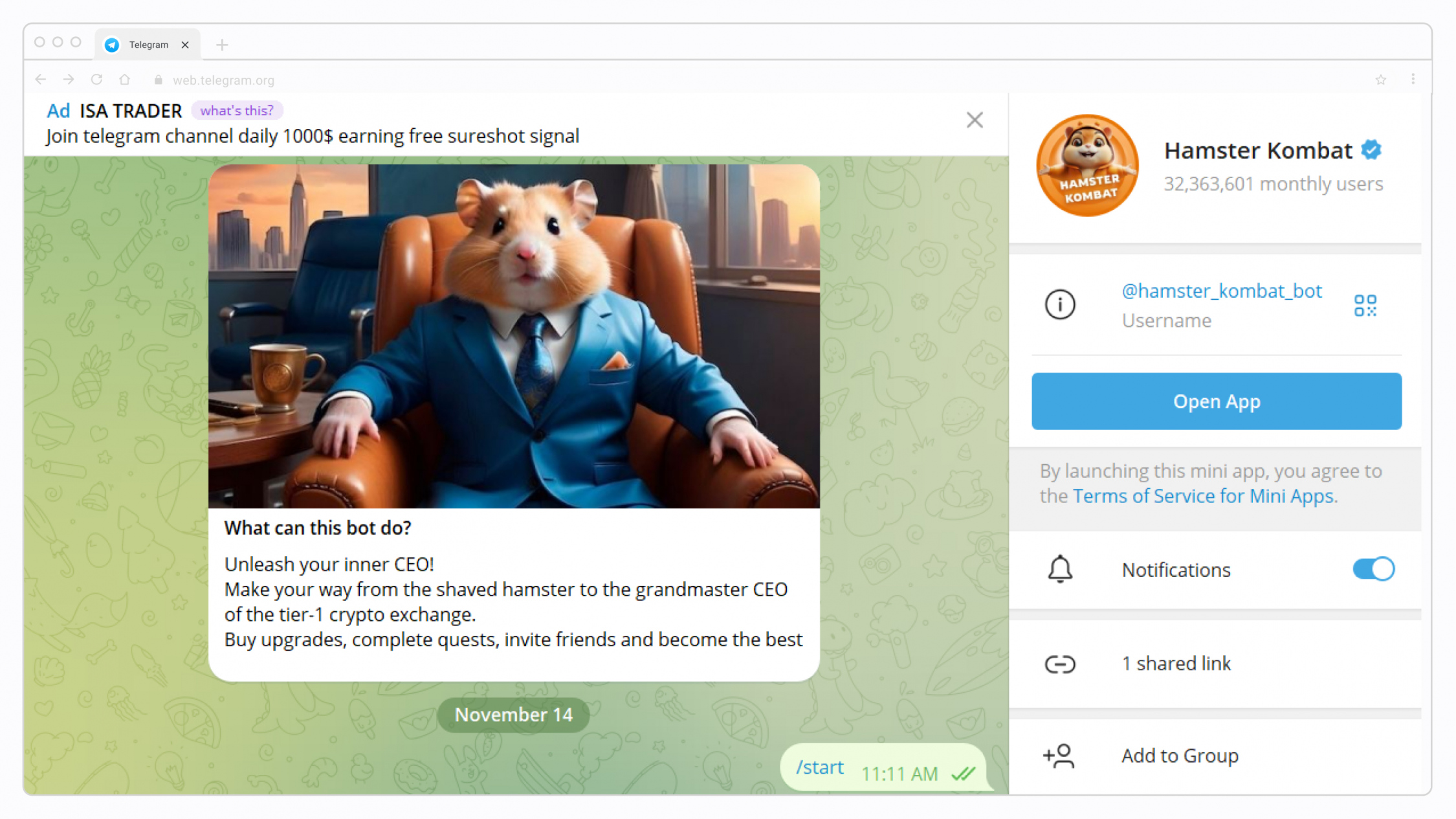
From there, I migrated to my phone to “tap away” at my entry-level hamster🐹:
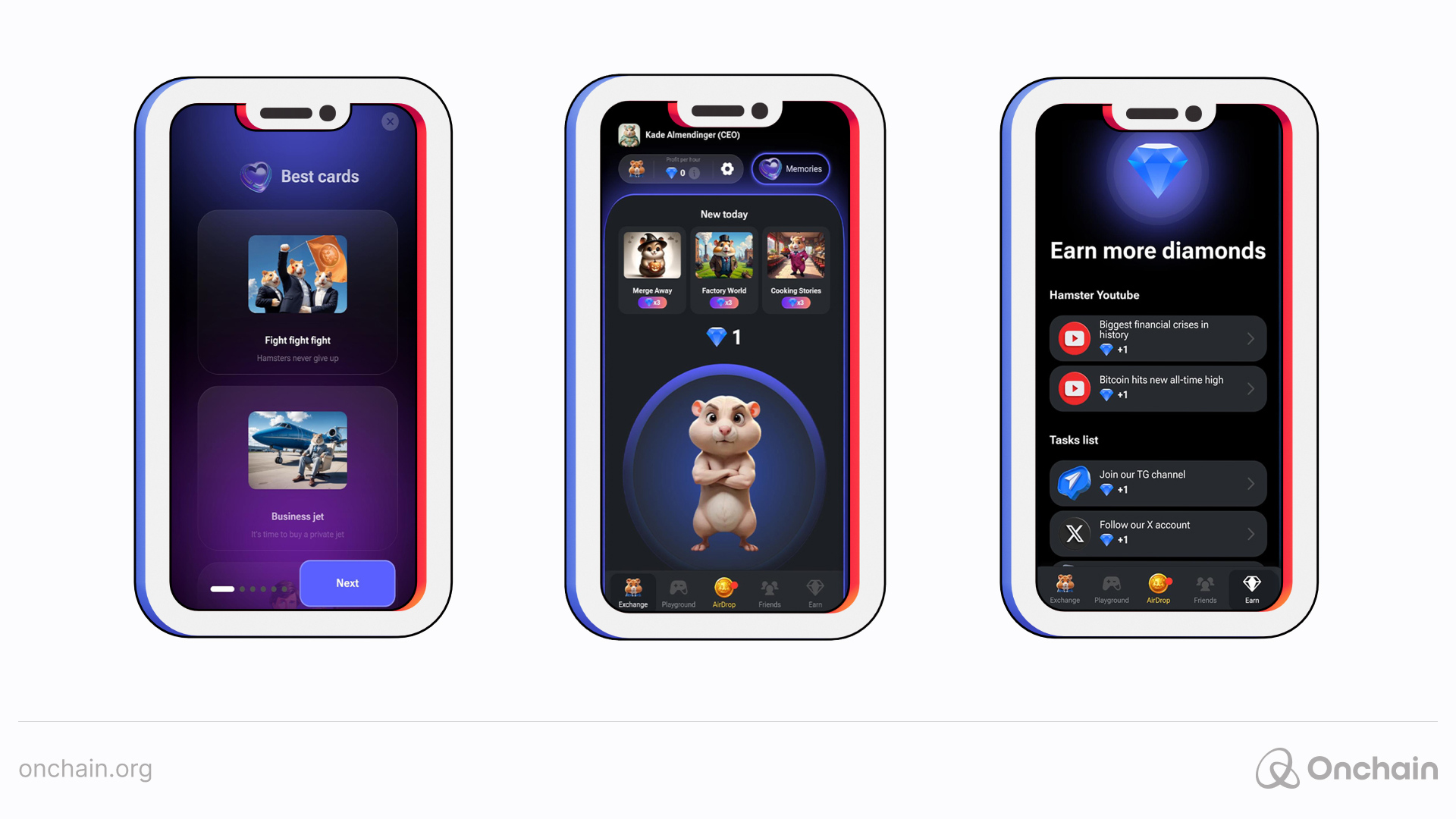
I’ll be honest. After mindlessly tapping away for a few minutes, I was already over it.🤯 Gaming-wise, I’m personally more Mortal Kombat (“Finish him!” ☠️) than Hamster Kombat.
That being said, I was thoroughly impressed with the whole process and can see the appeal of Telegram apps with a simple UX for crypto newcomers. I decided to explore the TON app ecosystem and was surprised by all the offerings that cater to gamers, shoppers, and crypto natives like myself.
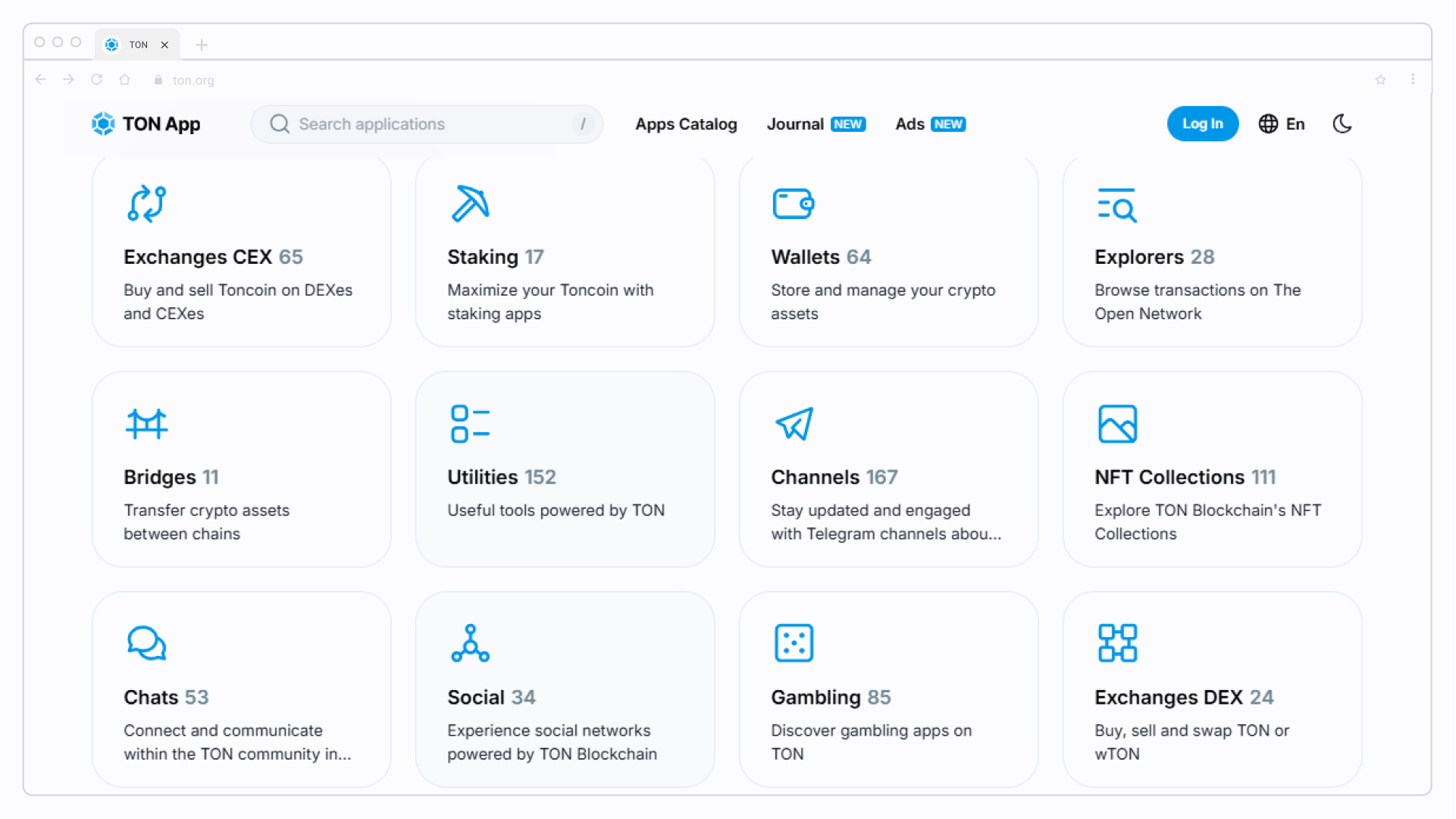
Crypto mini-apps on offer include DEXs, wallets, bridges, staking tools, blockchain explorers, and more. Beyond the crypto realm, you can find VPNs, social networks, eSIMS, and a whole lot more. There is even a Telegram mini-app that functions as a Lyft and Uber alternative.
Telegram app monetization opportunities
For entrepreneurs and founders, building a project on Telegram seems quite promising. Valuations for Telegram mini-apps and bots are fairly high. In addition, low development costs have the potential to produce healthy returns.
The incorporation of TON into Telegram provides a large — and captive — user base. While popular globally, Telegram usage is particularly widespread in Russia, Ukraine, Brazil, Nigeria, and much of S/SE Asia. Conversely, decentralized social media (DeSoc) projects like Lens Protocol and Farcaster need to build their user bases.
Mini-apps are transforming Telegram into an “everything app” that offers messaging, gaming, decentralized finance (DeFi), entertainment, social media, and more. Telegram mini-app creators have a variety of ways to monetize app users, including:
- In-app purchases: These generally refer to paying for virtual items such as weapons, clothing, or in-game currency. They are a popular revenue stream for game developers but may also be used on other apps.
- Advertising: Telegram app developers can earn income through paid ads and brand partnerships. App users who watch or view ads may receive in-app tokens, discounts, or other perks.
- Token release: One of the most lucrative yet simple ways to earn revenue — and attract an audience. Many teams offer users tokens as a financial incentive for using their apps. The Notcoin airdrop alone distributed over $2.5 billion worth of tokens.
Other revenue drivers worth mentioning include microtipping creators, subscription services, and other value-added services like VIP perks. While the benefits of building on Telegram are easy to see, working within the TON ecosystem also has challenges.
Challenges with Telegram app monetization
The TON ecosystem is relatively small compared to other blockchains like Ethereum, Solana, and Tron. However, its architecture has many benefits when it comes to speed and transaction costs. That being said, however, it isn’t easy to port over apps or decentralized apps (dApps) from other blockchains. Future improvements to the TON ecosystem seek to solve cross-chain compatibility issues.
With various countries taking issue with Telegram’s commitment to user privacy, there are also regulatory and legal compliance risks. TON’s partnership with Telegram could affect mini-app token prices or an app’s local availability.
Despite growing significantly in 2024, TON has a much smaller DeFi ecosystem than you may suspect. It only has $350 million in total value locked (TVL). This pales in comparison to other major blockchains and places TON outside the top 20. To improve on this front, TON partnered with Curve to develop DeFi solutions for staking, lending, and trading.
Current and future competition from other hybrid Web2/Web3 platforms could also draw away users, developers, founders, and funds. WeChat is one challenger that offers mini-programs similar to Telegram’s mini-apps. And Sonic released a tap-to-earn game on TikTok with plans for a token launch. Lastly, rumors continue to swirl about X launching various blockchain integrations like crypto payments and dApps.
Telegram’s Web2-and-Web3 ecosystem
Web3 dApps are providing an alternative to traditional social media platforms (SoMe). At the same time, many Web2 platforms like Discord and Telegram are incorporating Web3 technology to steer their large user bases toward blockchain-based applications and offerings.
No matter which avenue you choose, you need to understand your user’s mindset. In the next article, we’ll explain how to get into their heads so you develop a killer go to market strategy. Hit the arrow below to learn how.
